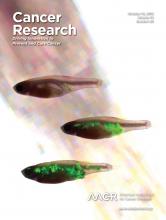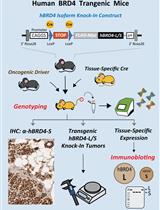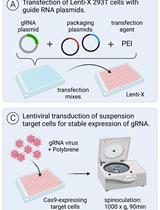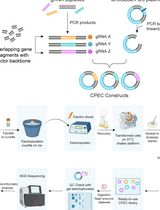- EN - English
- CN - 中文
Generation of Mitochondrial-nuclear eXchange Mice via Pronuclear Transfer
通过原核移植生成线粒体-细胞核置换小鼠
发布: 2016年10月20日第6卷第20期 DOI: 10.21769/BioProtoc.1976 浏览次数: 12282
评审: Masahiro MoritaAnonymous reviewer(s)
Abstract
The mitochondrial paradigm for common disease proposes that mitochondrial DNA (mtDNA) sequence variation can contribute to disease susceptibility and progression. To test this concept, we developed the Mitochondrial-nuclear eXchange (MNX) model, in which isolated embryonic pronuclei from one strain of species are implanted into an enucleated embryo of a different strain of the same species (e.g., C57BL/6 and C3H/HeN, Mus musculus), generating a re-constructed zygote harboring nuclear and mitochondrial genomes from different strains. Two-cell embryos are transferred to the ostia of oviducts in CD-1 pseudopregnant mice and developed to term. Nuclear genotype and mtDNA haplotype are verified in offspring, and females selected as founders for desired MNX colonies. By utilizing MNX models, many new avenues for the in vivo study for mitochondrial and nuclear genetics, or mito-Mendelian genetics, are now possible.
Keywords: Mitochondria (线粒体)Background
The isolation of nuclear and mitochondrial genomes in MNX mice strains allows examination of pathomechanisms of dysfunctional bioenergetics such as cardiovascular disease (Fetterman et al., 2013; Grimsditch et al., 2000; Paigen et al., 1990; Wang et al., 2005), glucose tolerance (Freeman et al., 2006; Kaku et al., 1988) and fatty liver disease (Betancourt et al., 2014). This approach is distinct from conplastic (Yu et al., 2009) and xenomitochondrial (McKenzie et al., 2004) approaches in that MNX mice are generated directly with 100% of the desired nuclear and mtDNA complements from respective donor strains through nuclear transfer and thus do not require repeated back-crossings (as do conplastics) to generate animals having the desired genotype (Figure 1). Furthermore, MNX mice allow direct, unambiguous assessment of mtDNA contributions to disease since there is no complexity introduced by potential nuclear cross-over and combinational effects in the filial generations associated with standard backcrossing methods used to generate conplastic mice.
Materials and Reagents
- 26 gauge needle
- 1 or 3 ml syringe
- Microscope slides
- CellTram vario syringe
- 10 centimeter tissue culture dishes
- Female donor mice (3-4 weeks of age) of desired nuclear or mitochondrial genetic backgrounds
- Male breeders (proven) of matching nuclear background as donor females
- Female recipient mice (8-10 weeks of age)
- Vasectomized male mice (proven)
- Gonadotropin from pregnant mare serum (PMS) (Sigma-Aldrich, catalog number: G4877 )
Note: This product has been discontinued. - Human chorionic gonadotropin (HCG) (Sigma-Aldrich, catalog number: CG10 )
- M2 medium (Sigma-Aldrich, catalog number: M7167 )
- Cytochalasin B from Drechslera dematioidea (Sigma-Aldrich, catalog number: C6762 )
- Colcemid (Sigma-Aldrich, catalog number: D1925 )
- Embryo tested mineral oil (Sigma-Aldrich, catalog number: M8410 )
- Water for embryo transfer (Sigma-Aldrich, catalog number: W1503 )
- Restriction enzyme:
- BclI (New England Biolabs)
- PflFI/AspI (New England Biolabs)
- Dilution of PMS (see Recipes)
- Dilution of HCG (see Recipes)
- Dilution of cytochalasin B (see Recipes)
- Dilution of colcemid (see Recipes)
Equipment
- Piezoelectric drill (piezo drill) (Sutter Instrument, model: PrimeTech PMM-150FU )
- Electroporator (BTX The Electroporation Experts, model: ECM 630 )
- Micropipette puller (horizontal pipette puller) (Sutter Instrument, model: P-87 )
The product P-87 has been discontinued and the available one is P-97 . - Micropipette microforge (Defonbrune microforge with microscope head) (Leitz)
- Holding pipette puller (vertical pipette puller) (David Kopf Instrument, model: 720 )
- Microscope (Laborlux S Nomarski DIC) (Leica Microsystems)
- CellTram Vario syringe (Eppendorf)
- Benchtop incubator (Cook, model: MINC G20079 )
- 45 degree angled forceps (Fine Science Tools, catalog number: 11251-35 )
- Straight forceps (Fine Science Tools, catalog number: 11251-10 )
- Microdissecting spring scissors (Roboz Surgical Instrument, catalog number: RS-5650 )
- Mouth pipette
Procedure
文章信息
版权信息
© 2016 The Authors; exclusive licensee Bio-protocol LLC.
如何引用
Kesterson, R. A., Johnson, L. W., Lambert, L. J., Vivian, J. L., Welch, D. R. and Ballinger, S. W. (2016). Generation of Mitochondrial-nuclear eXchange Mice via Pronuclear Transfer. Bio-protocol 6(20): e1976. DOI: 10.21769/BioProtoc.1976.
分类
分子生物学 > DNA > 诱/突变
分子生物学 > DNA > 基因分型
分子生物学 > DNA > DNA 克隆
您对这篇实验方法有问题吗?
在此处发布您的问题,我们将邀请本文作者来回答。同时,我们会将您的问题发布到Bio-protocol Exchange,以便寻求社区成员的帮助。
Share
Bluesky
X
Copy link














